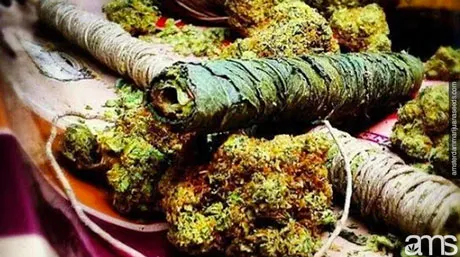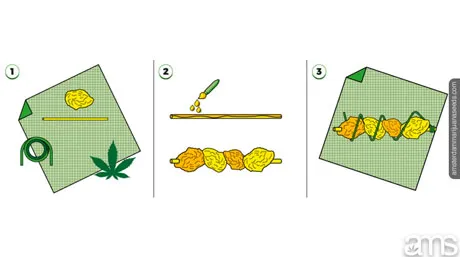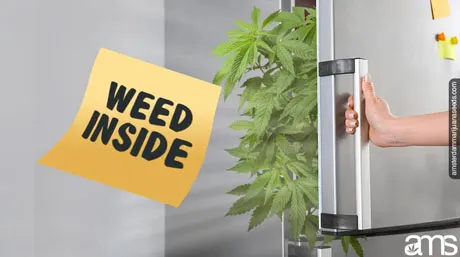General topics
My Journey to Mindful Relaxation
Published
10 months agoon
By
admin
In our rapidly advancing, modern society, finding a method to decompress and disconnect from the relentless flurry of daily stressors has become more than just an optional indulgence – it has evolved into an essential, survival-driven necessity. Be it the anxieties drawn from the professional realm, the pressures of maintaining personal relationships, or the never-ending stream of information and stimuli we are subjected to, the need to mentally ‘switch off’ for a while is undeniable. While some find their peaceful harbor in the pages of a riveting novel, a soothing glass of wine, or the adrenaline rush of a strenuous workout, I have discovered my personal haven in the subtly intoxicating, calming embrace of cannabis.
Smoking weed at the end of the day has morphed into more than just a habit or a means to seek temporary solace – it has become an integral part of my evening routine, a personal ritual infused with a sense of serenity and sacredness. This isn’t about an insatiable quest for a perpetual ‘high’ or an escape from reality. Instead, it’s about slowing down the ceaseless ticking of the clock, stepping out of the whirlwind of daily happenings, and granting myself the permission to rejuvenate, reflect, and simply be. It’s about indulging in that slow, deliberate act of lighting up, taking the first thoughtful drag, and feeling the day’s weight lifting off my shoulders, dissipating into the ether with each exhaled puff of smoke.

Understanding Cannabis: A Historical and Modern Perspective
Cannabis, often referred to as marijuana or weed, is a plant that has a rich tapestry of human use and interaction spanning thousands of years. Historically, it’s been utilized across diverse cultures for a myriad of purposes ranging from medicinal treatments to spiritual rituals, and for personal relaxation and recreational purposes. The use of cannabis as a therapeutic agent dates back to ancient civilizations like the Chinese and Egyptians who leveraged its healing properties to treat various ailments.
Despite its extensive historical usage, cannabis has trodden a somewhat controversial path, particularly in the 20th century, due to its psychoactive properties. Many societies stigmatized and criminalized its use, fueled by a lack of understanding and comprehensive research. However, the narrative surrounding cannabis has been shifting significantly over the past few decades. This shift can be attributed to an increasing body of scientific research that underscores its potential therapeutic benefits for a range of conditions from chronic pain to epilepsy, and even mental health disorders like anxiety and depression.
Delving into the science behind cannabis, it’s important to understand its key active components known as cannabinoids. These compounds interact with our body’s endocannabinoid system, a complex biological system that plays a critical role in regulating a variety of physiological and cognitive processes such as mood, pain sensation, appetite, and sleep.
Two of the most prominent cannabinoids that have been extensively studied are Tetrahydrocannabinol (THC) and Cannabidiol (CBD). THC is the primary psychoactive compound in cannabis, responsible for the ‘high’ feeling associated with its use. On the other hand, CBD, while not intoxicating, has garnered attention for its potential therapeutic benefits, including anti-inflammatory, analgesic, and anti-anxiety properties. The complexity and potential of these compounds, coupled with the holistic experience of cannabis use, underscore its role as more than just a recreational drug.

My Evening Ritual: A Deep Dive into Tranquility and Self-Reflection
For me, the act of smoking weed transcends beyond its psychoactive effects. Rather, it constitutes a ritual – a mindful and deliberate sequence of actions that provides a structure, a rhythm to my evenings. It’s about the almost ceremonial process of choosing the bud, grinding it gently, filling it into a rolling paper or a pipe, and then lighting it up. It’s about that first, deeply inhaled puff, and the subsequent exhale that seems to carry away the day’s accumulated worries and stress.
This ritual has transformed into a consistent beacon of tranquility, a sanctuary amidst the unpredictable tumult of life’s storms. It offers me a respite, a momentary pause in the incessant whirlwind of tasks and thoughts, enabling me to retreat inward and engage with my own consciousness in a more relaxed, reflective state. In this space, I can take a step back from the immediate demands of the external world and explore the contours of my internal landscape.
The cannabis experience acts like a subtle filter, decelerating the rapid-fire onslaught of thoughts and ideas racing through my mind. It’s akin to pressing a ‘pause’ button in the middle of a chaotic symphony, bringing forth a sense of calm and focused attentiveness that creates room for introspection and self-reflection. This change in cognitive tempo allows me to sift through the events of the day, and to process my experiences, emotions, and reactions at a pace that feels comfortable and unhurried.
This ritual, enhanced by the properties of cannabis, cultivates a sacred space – a mental and emotional sanctuary where pretenses fall away and authenticity flourishes. Here, I can shed the numerous roles I play in everyday life and grant myself the freedom and permission to simply ‘be’. It’s a space where I am neither defined by my successes nor my failures, but am allowed to exist in the raw, unadorned essence of my selfhood. The act of smoking weed becomes a conduit for self-exploration, a tool that aids in fostering a deeper connection with my inner self.

Cannabis and Mental Health: Navigating a Complex Landscape
The interplay between cannabis and mental health is a labyrinthine terrain that is still being actively explored and understood by the scientific community. This complex relationship is multi-layered, with cannabis demonstrating potential for both therapeutic benefits and potential risks, heavily dependent on factors like dosage, frequency of use, and individual predisposition.
Preliminary studies and anecdotal reports suggest that moderate cannabis use may have a beneficial effect on managing symptoms of various mental health conditions. For instance, it has been observed to potentially alleviate chronic stress, quell anxiety, and provide symptomatic relief for those grappling with depression. The cannabinoids present in cannabis, particularly CBD, are thought to interact with the brain’s serotonin receptors, which can influence mood and behavior.
However, it’s imperative to underscore that the key to leveraging these potential benefits is rooted in moderation and responsible use. Just as with any substance, be it caffeine, alcohol, or prescription medications, the potential for misuse or over-reliance is a substantial consideration.
Excessive consumption or dependence-driven use of cannabis may tilt the scales towards more harmful consequences. These can encompass a spectrum of adverse effects ranging from increased anxiety, a state of paranoia, and cognitive impairment, to even precipitating or exacerbating a substance use disorder. A more acute risk includes Cannabis Use Disorder (CUD), a clinical condition characterized by an uncontrollable desire to consume the drug, despite harmful consequences.
Therefore, the approach towards cannabis use calls for an intimate understanding of one’s individual response and tolerance. It is essential to start with low doses and adjust usage incrementally, keeping in mind one’s physiological responses and psychological comfort. It’s also crucial to consider various factors such as the strain of cannabis used, its THC: CBD ratio, and the method of consumption.
This cautionary approach becomes even more critical when dealing with individuals who have pre-existing mental health disorders or are at high risk. Some research has indicated a potential correlation between heavy cannabis use and an increased risk of developing conditions like schizophrenia, particularly in individuals with a genetic predisposition.
In conclusion, the dance between cannabis and mental health is delicate and necessitates informed mindful navigation. While cannabis might offer some therapeutic potential, it’s crucial to remember that it is not a one-size-fits-all solution, and should ideally be used in conjunction with other evidence-based mental health treatments and lifestyle modifications.

An Odyssey of Self-Discovery and Tranquility
My journey with cannabis has unfolded as a unique voyage of personal discovery and unwinding. It’s a path that has imparted invaluable lessons about mindful consumption, the significance of attentively tuning into my body’s cues and responses, and understanding my mental landscapes in more profound, nuanced ways. Amid the tendrils of smoke and the ritualistic tranquility it imparts, I have stumbled upon my sanctuary – a personal strategy to unplug from the pulsating rhythm of the outside world and to rekindle the connection with my inner self.
Ultimately, it’s not about the medium, but rather, how one chooses to wield it. In my case, cannabis serves not as an escape route from the realities of life, but as a conduit leading to introspection, serenity, and a richer comprehension of my own mind. It’s like a soft-focus lens that subtly shifts my perspective, allowing me to appreciate the contours of my thoughts and emotions in a distinct, yet enlightening manner.
However, as with any substance or tool, it’s paramount to approach cannabis with a blend of respect, understanding, and mindfulness. This means acknowledging its potential benefits as well as its possible risks. It is about learning to incorporate it responsibly into our lives in a way that contributes positively to our overall well-being, rather than becoming a crutch or a source of dependency.
Every individual’s journey with cannabis will differ, colored by their unique physiological responses, personal circumstances, and perspectives. It’s crucial to remember that my experience is just one among countless narratives. As we strive to understand this plant and its potential more deeply, we must also respect and listen to the diversity of experiences it inspires.
By sharing my story, I hope to shed light on the potential of cannabis as a tool for relaxation and introspection and to underscore the importance of mindful, informed consumption. As the dialogue around cannabis continues to evolve, it’s up to each of us to ensure that our relationship with this plant is healthful, mindful, and above all, personal.
Disclaimer: This article does not promote or endorse the use of cannabis, particularly where it’s illegal. It merely shares a personal experience. Always follow the laws of your locality regarding the use of cannabis and consult with a healthcare provider for professional advice.
Disclaimer: This content is meant for educational purposes only. It has been compiled with research from external sources. it is not meant to substitute any medical or legal advice. Please see your local laws for the legality of cannabis use.
You may like
-


Is Your Kid Smoking or Vaping Weed?
-


Press Release: PsychedelicNewsWire Named Official Media Sponsor of the 4th Annual Psychedelic Therapeutics and Drug Development Conference
-


Memorial Day’s best weed, prerolls, carts, and more 2024
-


Naps Done Right Can Make a Huge Difference
-


Michigan is selling more cannabis, but retailers are taking in less money
-


Can Marijuana Give A Break From All The Drama
General topics
A Happy Hippie’s Journey of Love, Cannabis, and Self-Discovery
Published
2 weeks agoon
May 3, 2024By
admin
Once upon a time in the enchanting Bieszczady Mountains of Poland, nestled among the breathtaking landscapes, a happy hippie found solace and joy at a vibrant rainbow people gathering. Dancing to the rhythm of life and embracing the mystical aura of the full moon, the air was filled with laughter, love, and the sweet aroma of marijuana. As the flames flickered and the smoke swirled around the mesmerizing fireplace, the happy hippie couldn’t help but feel a deep connection to nature and a sense of unity with fellow free spirits.
Having studied anthropology at the prestigious Oxford University, the happy hippie had developed a profound understanding of the cultural significance of plants like marijuana and their role in human rituals and traditions. For centuries, cannabis had been used by various cultures worldwide for spiritual, medicinal, and recreational purposes. It was a symbol of peace, relaxation, and a gateway to self-discovery.

As the happy hippie immersed themselves in the joyful ambiance of the rainbow gathering, they couldn’t help but reflect on the wisdom passed down through generations regarding the responsible use of marijuana. They understood the importance of education, awareness, and respect for the plant and its potential effects. It was a harmonious balance between indulging in the euphoric bliss of cannabis and honoring its sacred nature.
In this vibrant atmosphere of love and acceptance, the happy hippie felt inspired to share their knowledge and experiences with others. Their mission was to spread positivity, promote responsible cannabis use, and debunk the misconceptions surrounding it. Through their words, they aimed to empower individuals to make informed choices and embrace the holistic benefits of marijuana.

With every dance move and every puff of the joint, the happy hippie delved deeper into the profound connection between nature, spirituality, and cannabis. They reveled in the healing properties of the plant, which had been used to alleviate physical and emotional discomfort for centuries. From relieving pain to reducing anxiety, marijuana had the power to enhance one’s well-being and bring moments of pure bliss.
As the full moon illuminated the gathering, the happy hippie felt a surge of creative energy. They knew that their words could ignite a spark of curiosity and inspire others to explore the world of marijuana with an open mind and a responsible approach. They envisioned a society where cannabis was embraced not only for its recreational potential but also for its therapeutic properties and contribution to personal growth.
With the fire crackling and the rhythmic beats echoing through the mountains, the happy hippie felt a deep sense of gratitude for the magical moments experienced during this vibrant gathering. They realized that the true essence of being a happy hippie was not just about indulging in the pleasures of life but also about spreading love, acceptance, and knowledge.

And so, as the night wore on and the embers glowed, the happy hippie continued their journey, carrying the spirit of the rainbow gathering with them. They knew that their purpose in life was to inspire, educate, and create a positive impact. With the Bieszczady Mountains as their backdrop and the wisdom of the rainbow people in their heart, the happy hippie embraced the journey ahead, ready to share the joy of marijuana and the beauty of a harmonious existence.
As the full moon set behind the mountains, the happy hippie bid farewell to the rainbow gathering, knowing that the memories and connections made would forever be cherished. With a renewed sense of purpose, they embarked on their next adventure, eager to spread happiness and enlightenment wherever they went.

For the happy hippie, marijuana was not just a plant; it was a symbol of freedom, unity, and a gateway to a higher consciousness. And as they continued dancing to the rhythm of life, the sweet scent of marijuana trailing behind, the happy hippie radiated joy and positivity, leaving a trail of inspiration in their wake.
Remember, dear reader, to embrace the happiness within, to dance to the beat of your own drum, and to find moments of serenity in the simplest of pleasures. May the spirit of the happy hippie guide you on your own journey of self-discovery, and may the sweet aroma of marijuana always remind you of the beauty and magic that surrounds us.
With love and gratitude from the Bieszczady Mountains, The Happy Hippie

General topics
Thai Stick Weed: Exploring Exotic Cannabis Delights!
Published
1 month agoon
April 17, 2024By
admin
Table of Contents
What is a thai stick?
Thai Sticks are legendary cannabis products that originate from the Hill Tribes of Northeast Thailand. The traditional Thai Stick is crafted with a potent strain of cannabis called Asobinaka. The construction process involves impaling cannabis buds on a bamboo stick, then layering them with hash oil and wrapping them in cannabis leaves. This produces a uniquely concentrated form of cannabis, offering users a truly potent smoking experience.
Thai weed going global!
The popularity of Thai Sticks in the United States emerged during the Vietnam War, as soldiers discovered these potent cannabis products during their downtime. Upon returning home, the demand for Thai Sticks skyrocketed, resulting in thousands of kilos of weed and hash being smuggled into the U.S. However, as the supply of the key ingredient, the Asobinaka strain, dwindled, so did the demand for Thai Sticks. Today, the legacy of Thai Sticks continues, particularly in cannabis-friendly locations like Amsterdam. Adventurous individuals can even try crafting their own Thai Stick, Just don’t forget to take a picture and post it on Instagram, tag us so we can all see the result and enjoy the beauty.
What are cannabis cigars?
A Cannabis Cigar, also known as a Cannagar, is an enhanced smoking experience that utilizes hemp wick in place of tobacco. This natural and eco-friendly alternative is growing in popularity as more people seek healthier and more sustainable ways to consume cannabis. Essentially, a Cannabis Cigar dipped in hash oil is a contemporary interpretation of a Thai Stick, minus the bamboo skewer.

How to make thai sticks?
Creating your own Thai Stick requires certain materials including whole weed buds, cured cannabis leaves, bamboo skewers, hash oil, hemp wick, and parchment paper. After securing these items, you can start by coating your bamboo stick in hash oil to make the buds stick to it. Next, you’ll skewer your buds onto the stick and wrap them tightly with hemp wick for a uniform burn. Afterward, wrap the stick in parchment paper and freeze it for 24-48 hours. When it’s ready, carefully unwrap it, prepare your leaves, coat the buds with hash oil, and then wrap them with the leaves. The final steps involve wrapping the stick in parchment paper again and applying mild heat to seal everything together, and then wrapping the Thai Stick in hemp cord and curing it.
Hash oil
This is the main ingredient; you can make it yourself! Another process you must follow involves dissolving the weed in a solvent and filtering it.
We will add a link to a “How To” soon, so we can guide you through this step by step. Caution is advised due to the flammability of the solvent. It would be best if you didn’t burn anything but a blunt 😉
With a bit of luck and the right connections, you might be able to purchase it.

How to put your thai stick blunt together
You will begin to construct your Thai Stick following the procedure in the images below:

- to start, you will need to gather all of your materials.
- Next, you must coat your bamboo stick in hash oil. This will allow the bud to stick to the skewer while you finish the process.
- You will then skewer your buds on the Stick, being careful, and leave 1 cm at each end of the skewer. Being careful not to break off any buds, tie your hemp cord to one end of the Stick and start to shape them evenly while wrapping them tightly – this produces an even burn throughout the Thai Stick.
- Wrap the Stick in your parchment paper and put it in the freezer for 24-48 hours. Some people will choose to leave it for an extra day, but it should not stay for more than 3 days.
- Take the skewered buds from the freezer and carefully unwrap the parchment. Remove the string at this point – taking extra caution not to break any off the Stick.
– Once the string is off, prepare your prepared leaves.
– You will want to prepare your leaves by washing them and letting them dry ahead of time. - Now, you want to begin wrapping the Stick with your fresh cannabis leaves.
– Coat the buds with hash oil.
– Carefully wrap the buds with the cannabis leaves.
– You will want to do this three times, so your Stick is wrapped up in three layers of leaves. - Wrapping the Stick in parchment paper again and heat it lightly in a pan or hot plate. This will cause the hash oil to melt and seal everything together. Be Careful! DO NOT BURN IT!
- Remove the paper and gently wrap the Thai Stick in the cord again.
- Wrap it in the paper again in preparation for curing.
How to cure your thai stick
Thai Sticks can be cured using two methods – an earth-based method or a modern method.
- The earth-based method involves burying your Thai Sticks in a plastic bag in the earth for several weeks.
- Alternatively, the modern method requires placing your Thai Sticks in a plastic bag and refrigerating it for 3-4 days.
Each method has its own advantages and potential drawbacks, such as the possibility of mold growth or the required waiting period.

Why would you want to do this? There are a couple of reasons:
Firstly, due to a multitude of factors associated with the earth-based method (plant material, confinement in a non-breathable bag, temperature variations, etc.), your Thai Stick is at risk of mold development. Considering the investment of time, money, and effort that has gone into this project, the last thing you would want is for it to be compromised by mold.
Secondly, the question of patience comes into play – would you prefer to wait several weeks to enjoy your Thai Stick blunt, when you could potentially have it ready in merely 3-4 days with the modern curing process?
Smoking your thai stick
Smoking a Thai Stick is a straightforward process. You can smoke it in a pipe, or bong, or roll it into a joint. The key is to enjoy the experience, taking note of the powerful effects it can have. Thai Sticks are known for their slow burn and long-lasting effects, often burning for up to six hours. It’s important to smoke responsibly, ensuring that you’re in a safe, relaxed environment to fully enjoy the experience.
Thai sticks in a pipe
Thoroughly clean your pipe before packing Thai Sticks into the bowl. Pack Thai Stick into the bowl and light it like any other cannabis product. Enjoy your Thai Stick!
Thai sticks in a bong
Thai Stick is perfect for smoking in a bong! The process is pretty simple, Fill your bong with water and Thai Stick. Light it and enjoy!
Thai stick in a joint
Thai Stick is perfect for smoking in a joint! Roll up the Thai Stick in some rolling paper and enjoy. No need to overthink it!

Regardless of how you choose to smoke it
It is important to take your time and enjoy it. It can be a heavy hit, so be careful and ensure you are in a safe and relaxed environment. We have seen too many tourists in our beloved Dam taking a good thug and getting smoked with the high and all the madness around them.
We recommend that you find a comfortable spot, a relaxed area with chill surroundings, sit back, light it up, and enjoy!

Thai sticks burn longer than normal joints.
It can burn up to 6 hours on average. You will want to remove the skewer from the center of your Stick. This will leave a hollow tube in the middle of the Stick, allowing good airflow and a path for the smoke to travel down. Thai Sticks burn slowly. Please make sure you enjoy it responsibly. You will not smoke the whole thing. It’s okay to rest but put the Stick in an ashtray. We do not want you to fall asleep with a lit one in your hand.

Frequently asked questions
How much do Thai sticks cost?
The price of Thai Sticks is contingent on the quantity and quality of the cannabis used in its production. Each Thai Stick contains approximately four to ten grams of cannabis. Given the current market rate of around $20 per gram, this situates the price range for a single Thai Stick between $75 to $200. A high-quality, premium strain of cannabis will elevate the price, whereas lower-grade cannabis will decrease it.
Are thai sticks still around?
Indeed, Thai Sticks continue to be available and have experienced a resurgence in popularity. Originally, Thai Sticks enjoyed a period of high demand but fell out of favor towards the end of the 1980s. However, in recent years, due to the progressive legalization of cannabis worldwide, Thai Sticks have regained prominence in the cannabis market.
How was a thai stick made?
The creation of a Thai Stick involves a meticulous process. It begins with skewering cannabis buds onto a stick, followed by compressing them firmly against it. Subsequently, the skewer, now laden with cannabis, is wrapped in leaves and then set to cure. The curing process typically involves refrigeration for a period of 3-4 days. After curing, the Thai Stick is ready for consumption.
How long does it take to make a thai stick?
The process of creating a Thai Stick, excluding the time for cannabis cultivation, traditionally takes approximately two weeks from start to finish. This includes the preparation, assembly, and curing stages.
Is thai stick a strain?
While there is a cannabis strain known as “Thai Stick” or “Thai Sticks,” it should be clarified that this is distinct from the original strain used in traditional Thai Sticks. The authentic Thai Stick was made using the Asobinaka strain, which is now extinct.
How old are thai sticks?
Thai Sticks are a type of cannabis “cigar” originating from Thailand. Unfortunately, due to the clandestine nature of their historical usage, precise data regarding their age is elusive. However, the intriguing history of Thai Sticks continues to be a subject of interest, particularly as cannabis gains more widespread acceptance.
Does thai stick get you high?
To answer this question, it’s important to distinguish between the Thai Stick strain and the Thai Stick product. The Thai Stick strain, with a THC content of around 15-20%, is potent enough to induce a substantial-high. The Thai Stick product, also referred to as a “Cannagar,” is a multi-layered, oil-infused cannabis “cigar” that delivers a profoundly intense high when smoked.
Where can i buy thai sticks?
Thai Sticks can generally be located at cannabis dispensaries. In Amsterdam, reputable establishments such as Coffeeshop De Kade and Cannacenter Best Friends are known to carry them occasionally. Being specialty items, the quality of Thai Sticks can differ substantially, which is why it’s suggested to consult customer reviews prior to committing to a purchase. It’s crucial to ensure that the Thai Stick you procure is composed of 100% Sativa strain. Although it might require some effort to find a superior-quality Thai Stick, the unique and satisfying smoking experience it offers makes the quest entirely worthwhile.
What is the difference between a thai stick and a cannabis cigar?
The primary distinction between a Thai Stick and a Cannabis Cigar pertains to the time and method of their construction. A Cannabis Cigar is essentially a joint that uses cannabis leaves in place of traditional rolling paper. Thai Sticks, on the other hand, involves skewering and compressing cannabis buds onto bamboo sticks, which are then bound by hemp string and dipped in oil.
Are thai sticks made from an indica or sativa strain?
Historically, Thai Sticks have been produced exclusively using pure Sativa strains of cannabis.
General topics
Top 10 Herbal Alternatives to Tobacco for Marijuana Joints
Published
1 month agoon
April 9, 2024By
admin
1. Greengo
Greengo contains four primal ingredients:
- Eucalyptus
- Mint
- Hazelnut leaves
- Papaya.
As opposed to herbal tobacco, Greengo doesn’t harbor any nicotine content and has far lesser tar. It is an excellent combo for smoking marijuana as it doesn’t induce any feelings of addiction.
2. Sage
The consumption of Sage (Salvia officinalis) didn’t start recently. It is a natural herb with many therapeutic merits and helps eliminate digestive problems.
When used in rolling marijuana joints, one can quickly feel its healing effects kicking in fast, especially when White Sage is used.
3. Damiana
You have certainly heard about Damiana or used it to fancy your pot hit. A native plant in Mexico, Southern Texas, the Caribbean, and Central and Southern America.
This tobacco substitute has many health benefits, and most people have used it as an aphrodisiac for as long as it can be remembered.
Among the Aztecs, they used it for addressing infertility among men and upping sexual desire. It harbors intense psychotropic effects, just like high marijuana THC levels.
Couple up your high with Damiana in rolling joints instead of tobacco when you want to witness that couch-locked feeling.
4. Kanna
Kanna, scientifically called Sceletium Tortosum, or Channa, has existed in South Africa since prehistoric times, and pastoralists used to snuff it for smoking. Since then, it has been known for enhancing one’s mood, alleviating stressful conditions, and easing anxiety.
Depending on the doses consumed, heavy ones get described as causing sedating effects. This typically translates to fantastic outcomes when it gets used to smoking ganja.
Nonetheless, this tobacco substitute has some side effects. For instance, some write-ups purport that Kanna can increase blood pressure in temporary extremes. This brings us to the conclusion that it would be fantastic to ensure that you conduct due diligence before using Kanna.
5. Hops
Hops are the flowers of Humulus lupulus. Today, they get used to flavoring and bittering beer. However, as they belong to the cannabis family, these flowers also get used as replacements for the tobacco herb.
The easiest way to know hops when ingesting their vapor is through their sweet aroma and flavors since the terpene myrcene forms an integral part of them.
Now that myrcene harbors a combination of anti-depressant and sedative effects, it’s a fantastic product to raise the potency levels of your grass.
Nonetheless, it would be much more helpful if you smoked cannabis rolled with hops joints using low temperatures. High temperatures have characterized many side effects. If high temperatures do you the best, it would be ideal to go the vaping blends way instead of smoking.

Is Your Kid Smoking or Vaping Weed?

Press Release: PsychedelicNewsWire Named Official Media Sponsor of the 4th Annual Psychedelic Therapeutics and Drug Development Conference

Memorial Day’s best weed, prerolls, carts, and more 2024

Naps Done Right Can Make a Huge Difference

Michigan is selling more cannabis, but retailers are taking in less money

Can Marijuana Give A Break From All The Drama

Consumer Spending Validates Marijuana Rescheduling

How Did Hidden Leaf Cannabis Become the Leader of the Ontario Marijuana Market?

Are You Bored So You Smoke Weed or Do You Smoke Marijuana and Get Bored?

Cannabis Rescheduling Takes The Next Steps

Distressed Cannabis Business Takeaways – Canna Law Blog™

United States: Alex Malyshev And Melinda Fellner Discuss The Intersection Of Tax And Cannabis In New Video Series – Part VI: Licensing (Video)

Drug Testing for Marijuana – The Joint Blog

What you Need to Know

Cannabis, alcohol firm SNDL loses CA$372.4 million in 2022

NCIA Write About Their Equity Scholarship Program

City Of Oakland Issues RFP For Employee Training Programs

It has been a wild news week – here’s how CBD and weed can help you relax

A new April 20 cannabis contest includes a $40,000 purse

UArizona launches online cannabis compliance online course
Trending
-

 Cannabis News1 year ago
Cannabis News1 year agoDistressed Cannabis Business Takeaways – Canna Law Blog™
-

 One-Hit Wonders1 year ago
One-Hit Wonders1 year agoUnited States: Alex Malyshev And Melinda Fellner Discuss The Intersection Of Tax And Cannabis In New Video Series – Part VI: Licensing (Video)
-

 drug testing5 months ago
drug testing5 months agoDrug Testing for Marijuana – The Joint Blog
-

 Cannabis 1011 year ago
Cannabis 1011 year agoWhat you Need to Know
-

 Marijuana Business Daily1 year ago
Marijuana Business Daily1 year agoCannabis, alcohol firm SNDL loses CA$372.4 million in 2022
-

 Education1 year ago
Education1 year agoNCIA Write About Their Equity Scholarship Program
-

 Education1 year ago
Education1 year agoCity Of Oakland Issues RFP For Employee Training Programs
-

 Cannabis1 year ago
Cannabis1 year agoIt has been a wild news week – here’s how CBD and weed can help you relax



